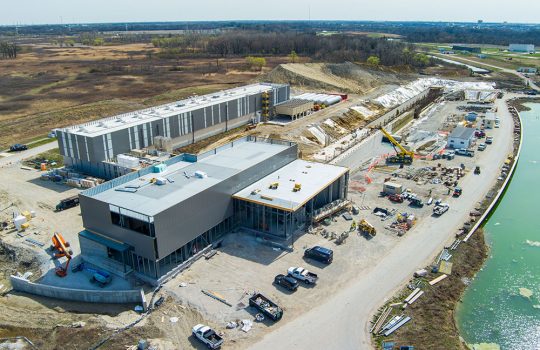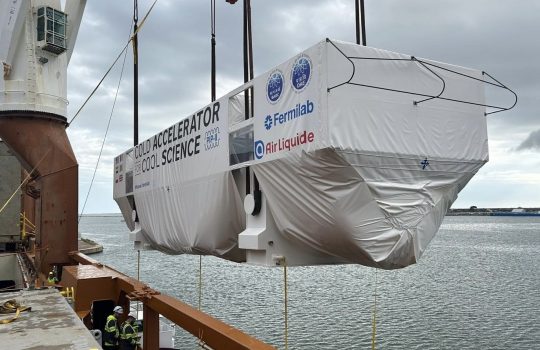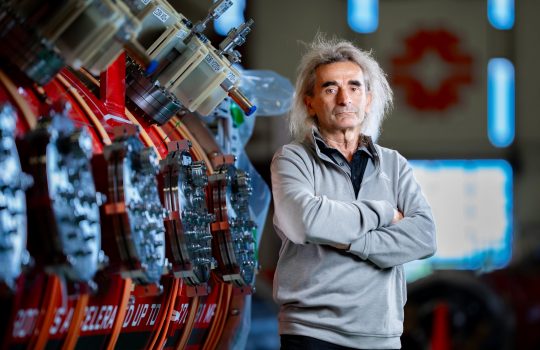The Proton Improvement Plan-II project, essential for upgrading Fermilab’s particle accelerator complex, just achieved an important milestone by completing its Early Conventional Facilities subproject. This includes infrastructure and building systems to support a new cryogenic plant for PIP-II.
The PIP-II project is constructing a powerful new linear particle accelerator at Fermilab, which will use state-of-the-art superconducting radiofrequency technology to produce the neutrino beam for the Deep Underground Neutrino Experiment. DUNE — the world’s most comprehensive neutrino experiment — is scheduled to start up in 2028. In addition to DUNE, the accelerator upgrade will enable advanced high-energy physics experiments for decades to come.
On Nov. 22, a Department of Energy independent project review team recommended that the PIP-II Early Conventional Facilities subproject is ready for Critical Decision 4 approval. CD-4 is the last of five approval stages — CD-0 through CD-4 — signaling that the Early Conventional Facilities subproject is complete and the start of a series of activities associated with transition to operations. Conventional facilities encompass all the basic and essential systems in a building that allow it to function properly, such as electrical wiring, plumbing and lighting.
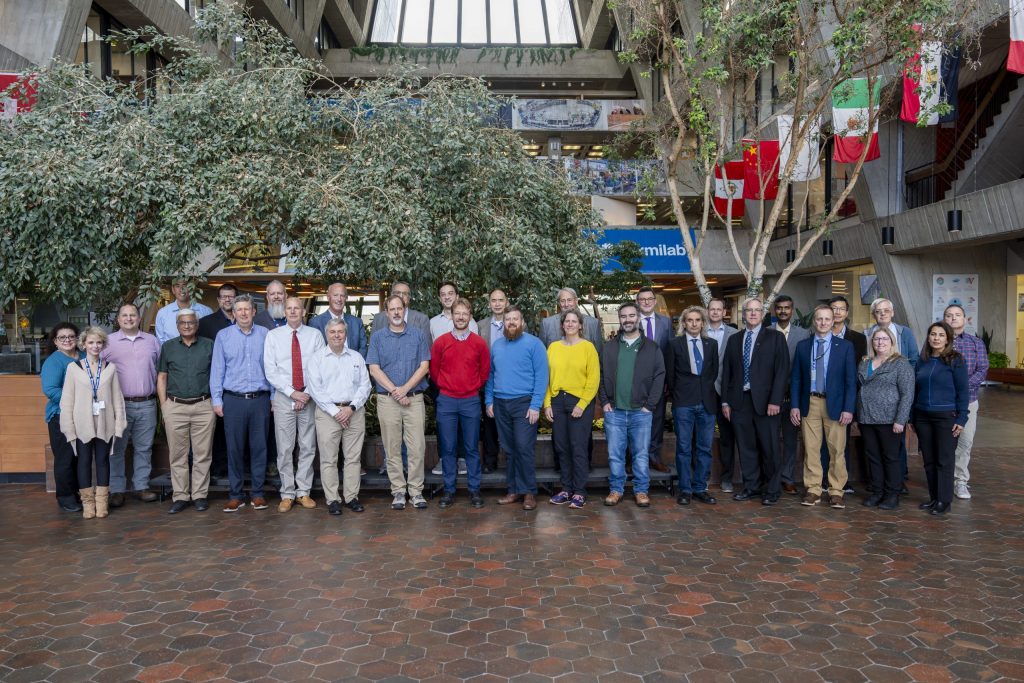
One of the unique aspects of this milestone is proving the success of the subproject model used by the DOE Office of Science. This approach treats each part of an overall project as a standalone unit with its own leadership team, plans and strategy. By granting funding for specific subprojects, DOE facilitates construction to proceed more efficiently.
“The ECF subproject provided an effective means to construct a portion of the PIP-II conventional facilities early, which allowed us to achieve schedule and cost goals,” said Steve Dixon, PIP-II conventional facilities manager. “This was especially challenging because the subproject was constructed during the COVID period. Its success was thanks to close coordination between DOE and Fermilab.”
Cristian Boffo, PIP-II project manager, highlighted the role of the subproject model for enhancing efficiency. “Subprojects are a very effective tool in the project management bag that allows for adaptability as the work is underway,” Boffo explained.
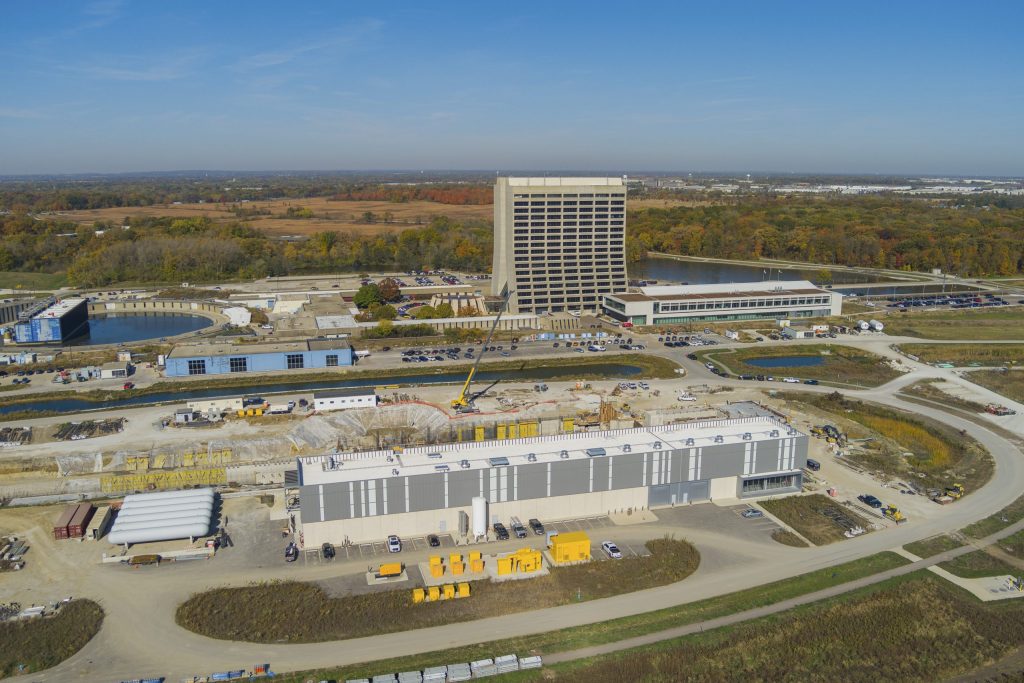
The ECF subproject had four focuses: prepping the site by building roads and rebuilding the cooling pond, constructing the cryogenic plant building, installing the isolated cooling loop, and installing the process power transformer.
The subproject received CD-2/3 approvals from the Department of Energy in July 2020, which authorized Fermilab to start site preparation and construction for the cryogenic plant building. Fermilab received official acceptance of the site work in November 2022, and in April 2023, Fermilab celebrated the completion of the cryogenic plant building.
The cryogenic plant is an in-kind contribution by the Department of Atomic Energy in India — the largest of many in-kind contributions to PIP-II by international partners. An essential piece of the cryogenic plant, the coldbox, was constructed by European industry and is currently en route to Fermilab, scheduled to arrive in late December.
“The PIP-II ECF subproject completion is an important step for Fermilab and the Department of Energy, providing a world-class platform for the global high-energy physics community,” said Steven Neus, federal project director for the Fermi Site Office. “It will enable world-leading discovery experiments investigating the fundamental nature of the universe.”
Fermi National Accelerator Laboratory is supported by the Office of Science of the U.S. Department of Energy. The Office of Science is the single largest supporter of basic research in the physical sciences in the United States and is working to address some of the most pressing challenges of our time. For more information, please visit science.energy.gov.

